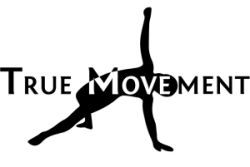A Multidisciplinary Approach
“What kind of trainer are you?” This was the question the large man sitting in front of me kept asking. A bit over a year ago I was interviewing for a trainer position in what was listed as a “medical office” in the ad. Entering the office I saw a wide variety of posters and pamphlets all claiming miraculous results using long-debunked (and even some dangerous) ideas. It turned out this was not so much a medical office as it was a quack’s office. Going into the room to interview I was already very put off by my recent discovery, but I tried to make the best of the situation.
The man interviewing me insisted I must be a certain type of trainer and I should identify as such. I politely informed him that I had no allegiance to any one style because I felt that would limit my abilities. This led to a slightly agitated tirade explaining how he was boot camp style trainer, but when he needed to be he was a functional trainer, physical therapist*, bodybuilder, strength coach, etc. What I heard in this little rant was that different situations require different approaches, but I needed to pick just one method and be proud of it. Despite my observation, this man insisted once again that I must have a style. Needless to say I left feeling exasperated and did not return for a second interview.
I tell this story to illustrate a point that I feel is very common in the health and fitness industry. Everyone (including professionals) gets tied down to the idea that a single method or tool is the best way to achieve every goal imaginable. Yoga, Olympic lifting, kettlebells, Crossfit, Pilates, bodybuilding, endurance sports, martial arts, and power lifting all probably have something of value we can take away from the experience. Certain people are better fits for specific activities, but there has yet to be one method that works for every person and has all the answers. Looking outside your routine practices often allows for the greatest amount of learning and growth.
I think we can all agree that yoga and power lifting are quite different activities from one another. On the other hand, I think if someone practicing one discipline looked at the other (if even just to borrow a few techniques) that they would find some benefit. Maybe learning to create whole body tension from practicing some power lifting techniques could help you do a certain challenging yoga pose you’ve been struggling with. Maybe learning to breathe deeply into your diaphragm from yoga could add a few extra pounds to your squat.
Everything we learn and do happens with the same body. To limit ourselves to just one teacher ensures we’ll only learn one way of doing things. It’s not always easy, but sometimes we need to look outside our own ideas and styles to realize what we’ve been missing.
*The man interviewing me was not a physical therapist. I can only speculate why he would lie to a prospective employee.


